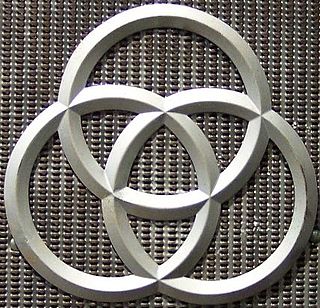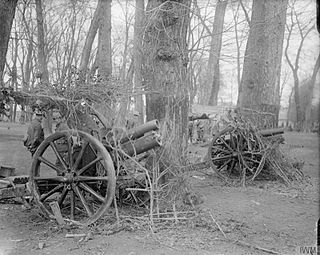| 122 mm howitzer M1909 | |
|---|---|
Soviet 122 mm howitzer Model 1909, at the Hämeenlinna Artillery Museum. | |
| Type | Field howitzer |
| Place of origin | Russian Empire |
| Service history | |
| Used by | |
| Wars | World War I Russian Civil War Winter War |
| Production history | |
| Designer | Krupp |
| Designed | 1909 |
| Specifications | |
| Weight | 1,340 kg (2,950 lb) |
| Barrel length | overal:1.69 m (5 ft 7 in) L/14 [1] |
| Shell | Separate loading charge and projectile 121.92 x 159mm R |
| Shell weight | 22.8 kg (50 lb) [1] |
| Caliber | 121.92 mm (4.8 in) |
| Breech | Horizontal sliding-block |
| Recoil | Hydro-spring |
| Carriage | Box trail |
| Elevation | -1° to 43° |
| Traverse | 4° |
| Muzzle velocity | 335 m/s (1,100 ft/s) |
| Maximum firing range | 7.6 km (4.7 mi) [1] |
The 122 mm howitzer M1909 ( Russian : 122-мм гаубица обр. 1909 гг.) was a Russian Empire 121.92 mm (4.8 inch) howitzer used throughout World War I.

Russian is an East Slavic language, which is official in the Russian Federation, Belarus, Kazakhstan and Kyrgyzstan, as well as being widely used throughout Eastern Europe, the Baltic states, the Caucasus and Central Asia. It was the de facto language of the Soviet Union until its dissolution on 25 December 1991. Although, nowadays, nearly three decades after the breakup of the Soviet Union, Russian is used in official capacity or in public life in all the post-Soviet nation-states, as well as in Israel and Mongolia, the rise of state-specific varieties of this language tends to be strongly denied in Russia, in line with the Russian World ideology.

The Russian Empire, also known as Imperial Russia or simply Russia, was an empire that existed across Eurasia and North America from 1721, following the end of the Great Northern War, until the Republic was proclaimed by the Provisional Government that took power after the February Revolution of 1917.

A howitzer is a type of artillery piece characterized by a relatively short barrel and the use of comparatively small propellant charges to propel projectiles over relatively high trajectories, with a steep angle of descent.
Following the defeats of the Russo-Japanese War, Russia sought to modernize some of its equipment, which included the purchase of foreign designed artillery. Seeking new systems from both France and Germany, the 122 mm howitzer M1909 was developed by the German arms manufacturer Krupp. [2] Russia also bought a very similar system from the French arms manufacturer Schneider et Cie, the 122 mm howitzer M1910.

The Russo-Japanese War was fought during 1904-1905 between the Russian Empire and the Empire of Japan over rival imperial ambitions in Manchuria and Korea. The major theatres of operations were the Liaodong Peninsula and Mukden in Southern Manchuria and the seas around Korea, Japan and the Yellow Sea.

The Krupp family, a prominent 400-year-old German dynasty from Essen, became famous for their production of steel, artillery, ammunition, and other armaments. The family business, known as Friedrich Krupp AG, was the largest company in Europe at the beginning of the 20th century. It was important to weapons development and production in both world wars. One of the most powerful dynasties in European history, for 400 years Krupp flourished as the premier weapons manufacturer for Germany. From the Thirty Years' War until the end of the Second World War, they produced everything from battleships, U-boats, tanks, howitzers, guns, utilities, and hundreds of other commodities.

122 mm howitzer M1910 was a Russian Empire 121.92 mm (4.8 inch) field howitzer used throughout World War I in large numbers.
It was later updated by the Soviet Union as the 122 mm howitzer M1909/37 which saw combat in the German-Soviet War.

The Soviet Union, officially the Union of Soviet Socialist Republics (USSR), was a socialist state in Eurasia that existed from 30 December 1922 to 26 December 1991. Nominally a union of multiple national Soviet republics, its government and economy were highly centralized. The country was a one-party state, governed by the Communist Party with Moscow as its capital in its largest republic, the Russian Soviet Federative Socialist Republic. Other major urban centres were Leningrad, Kiev, Minsk, Alma-Ata, and Novosibirsk.

122 mm howitzer M1909/37 was a Soviet 121.92 mm (4.8 inch) howitzer, a modernization of World War I era 122 mm howitzer M1909. The gun saw combat in the German-Soviet War.
















